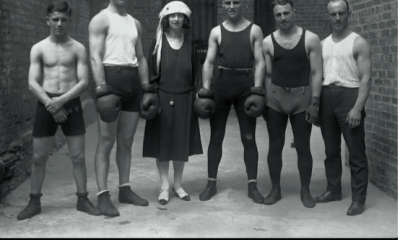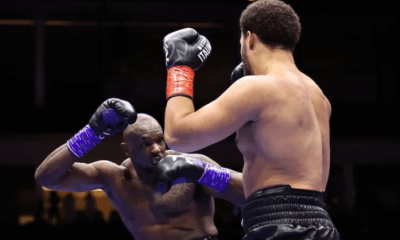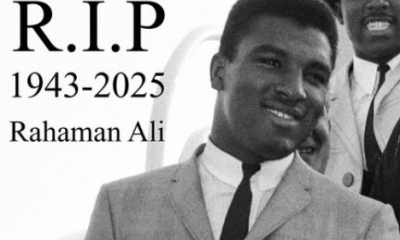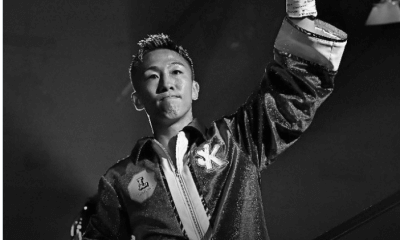Articles of 2005
Prizefighting in Days Gone By (Part 2)
From Bareknuckle to Gloves
For 50 years from the initiation of the Marquis of Queensberry rules, both bareknuckle and gloved boxing continued to be promoted. Prizefighting in general was viewed as a sport which attracted the criminal element and only watched by the lower-class. The truth was, spectators wagered on the outcome of bouts and fans came from all walks of life. John L. Sullivan had fought and won the last sanctioned bareknuckle fight in 1889 against Jake Kilrain, and from this time on bareknuckle boxing would never be the same. Bareknuckle boxing continued, but fights were no longer sanctioned and the sport slowly faded from the public eye. In the early 1900s, boxing had yet to be legalized in many parts of the United States. In 1920, however, New York passed the Walker Law which permitted public prizefighting. Soon other states followed suit and gloved boxing entered its golden age. Gentleman Jim Corbett demonstrated his excellent boxing skills, Jack Johnson and Gene Tunney showcased their defensive prowess, Jack Dempsey displayed an unmatched ferocity, and Joe Louis and Rocky Marciano knocked their opponents out. For the first half of the 20th century boxing enjoyed an unparalleled growth spurt. During this era, fighters would travel from city to city, often week to week, challenging others and earning whatever money they could. These were the days when fighters truly had to pay their dues to get the opportunity to fight for a title.
Today’s Scene
The current bareknuckle scene hasn’t completed disappeared, however the average fan doesn’t know it exists any longer other than in movies like “Fight Club” and “Snatch.” As in the past, those involved in bareknuckle fights find it difficult to find a suitable venue where a bout can take place without police intervention. Most bouts are fought “underground” and only observed by a handful of spectators. Recently in the United States, street fighter Kimbo Slice took on Boston police officer and MMA fighter Sean Gannon in an unsanctioned bout which left Kimbo unconscious for the first time in his career. Gannon was subsequently reprimanded by the department for engaging in an illegal act; however, both combatants continue their fighting careers.
Once a year fighters from Thailand and neighboring Burma come together during the three-day Songkran festival for the Muay Kaad Chauk or “Bound Fist Fighting.” While technically prohibited by the Thai government, these fights have gone on for hundreds of years and it’s doubtful they will end anytime soon. In these clashes, the fists are wrapped with a hemp rope (not bare), and just about anything goes. Unlike in sanctioned boxing, fights are not stopped because of small cuts or slight injuries. Most of the fights are out and out brawls with the fighters preferring to stand toe-to-toe instead of using side-to-side movement and fancy footwork.
In Burmese boxing or Leth Wei as its known, hands are also wrapped with a hemp rope or cotton wraps. As in the Muay Kaad Chuak, punches, kicks, elbows, knees, headbutts and throws are all allowed. Leth Wei is the norm around the country and gloved bouts are a rarity. These bouts are not for the faint of heart. Burmese fighters are known as being some of the grittiest and durable fighters in Southeast Asia – and for good reason. Rounds are three minutes with a two minute break as in traditional Muay Thai. A fighter can be knocked down four times, or knocked out twice in a five-round fight before being declared the loser. In the case of a knockout, the cornermen have one minute to revive their fighter and get him back in the ring. The fighter must then finish the round he was knocked out in. It’s not uncommon for a fighter to be knocked out, revitalized and then come back to win the fight. If after five rounds neither fighter knocks his opponent out or renders him incapable of continuing, the fight is declared a draw. Until recently the fifth round would continue until one of the combatants was knocked out for longer than thirty seconds. Bouts could go on for hours and fighters literally fought to their last breath. Needless to say these fighters are a rare and soon to be extinct breed. Even with the growth of MMA and the internet serving as the central marketplace for footage of bareknuckle or unsanctioned contests, the days of gloveless boxing seem numbered. The sweet science is a paradoxical sport and one we as humans relate to on the most primitive level. Some look at boxing as an art form or highly skilled profession practiced by talented and courageous athletes; others view it as a brutish, caveman-like sport in which humans administer physical beatings upon each other. Even in our so-called civilized world, regardless of how one feels, the sport of boxing continues relatively unabated. While there are the occasional talks of banning the sport, boxing translates into big business and big money and economies prosper because of it. It still offers a way out for the less fortunate while at the same time providing entertainment and excitement for fans around the world. Promoters, trainers, managers, corporations and sponsors all add and detract from the boxing equation, hopefully with the person taking the physical punishment ending up with what they themselves consider to be “sufficient” compensation. Boxing is a “hurting business” and it only seems fair that those who absorb the blows receive the lion’s share of the prize. If only someone would tell this to Don King.
-

 Featured Articles3 weeks ago
Featured Articles3 weeks agoThe Hauser Report: Cinematic and Literary Notes
-

 Featured Articles4 weeks ago
Featured Articles4 weeks agoOscar Duarte and Regis Prograis Prevail on an Action-Packed Fight Card in Chicago
-

 Book Review3 weeks ago
Book Review3 weeks agoMark Kriegel’s New Book About Mike Tyson is a Must-Read
-

 Featured Articles1 week ago
Featured Articles1 week agoThe Hauser Report: Debunking Two Myths and Other Notes
-

 Featured Articles2 weeks ago
Featured Articles2 weeks agoMoses Itauma Continues his Rapid Rise; Steamrolls Dillian Whyte in Riyadh
-

 Featured Articles4 weeks ago
Featured Articles4 weeks agoRahaman Ali (1943-2025)
-

 Featured Articles4 weeks ago
Featured Articles4 weeks agoTop Rank Boxing is in Limbo, but that Hasn’t Benched Robert Garcia’s Up-and-Comers
-

 Featured Articles3 weeks ago
Featured Articles3 weeks agoKotari and Urakawa – Two Fatalities on the Same Card in Japan: Boxing’s Darkest Day














